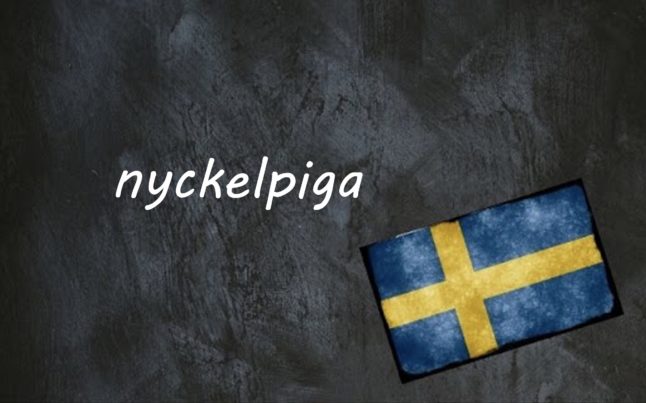A mysterious and beautiful, and now classic, Swedish expression, is att skita i det blå skåpet, which literally means ‘to take a shit in the blue cabinet’.
It is mysterious because most Swedes really have no idea where it originates. And though some will undoubtedly tell you it comes from Göta kanal, a Swedish comedy film from 1981 – where a rich Arab is looking to buy 1,000 motorboats and sets off a race where two companies, one smaller and one larger, compete in a race for the contract – that is not the actual origin.
In 2007 Swedish newspaper Dagens Nyheter’s Catharina Grünbaum most likely uncovered the origin of the expression in her interesting article Blå skåpets hemlighet avslöjad (‘The secret of the blue cabinet revealed’).
It is true that the expression gained prominence after the film, but it was in use prior to the film, something Grünbaum concludes from one of her readers sharing a story of a teacher using the expression in the 70s.
The true meaning of the expression is ‘to make a fool of oneself’ or ‘to go too far’. So the ‘shit’-part together with the ‘blue cabinet’-part, basically mean to take ‘a dump where one shouldn’t’ or ‘to do something inappropriate’, both of which will make you look bad. Ergo, you should not shit in the blue cabinet. So what is the blue cabinet? That is really the mystery here. And that is what Grünbaum managed to uncover.
The answer came from readers’ letters referring to older people having told their younger ones that blue-painted furniture in country homes were fine furniture.
Grünbaum gets further confirmation for this by the former cultural director of Sweden’s oldest open-air museum and zoo, Skansen, the colour expert Ralph Edenheim. Edenheim recounts how before Prussian blue, known as berlinerblått in Swedish, was first mass-produced at the beginning of the 19th century, regular people could not afford to paint with blue. Blue was then considered more fancy than the conventional maroon and ochre, and often used on the most prized pieces of furniture.
One of those prized pieces was the cabinet where they used to store linen and silverware. It follows that using that cabinet as a potty would have been most inappropriate.
Whatever you do when in need, do not skit i det blå skåpet. The phrase is not that rude, and is often a bit humorous. Check to see if your Swedish friends know where att skita i det blå skåpet comes from – expert points to the ones that do. Have a good weekend!
Example sentences:
Nu fan har du skitit i det blå skåpet!
Now you’ve goddamn gone and done it!
Skitit i det blå skåpet? Vad i helvete menar du?
Gone and done it? What the hell do you mean?
Villa, Volvo, Vovve: The Local’s Word Guide to Swedish Life, written by The Local’s journalists, is now available to order. Head to lysforlag.com/vvv to read more about it. It is also possible to buy your copy from Amazon US, Amazon UK, Bokus or Adlibris.



 Please whitelist us to continue reading.
Please whitelist us to continue reading.
Member comments